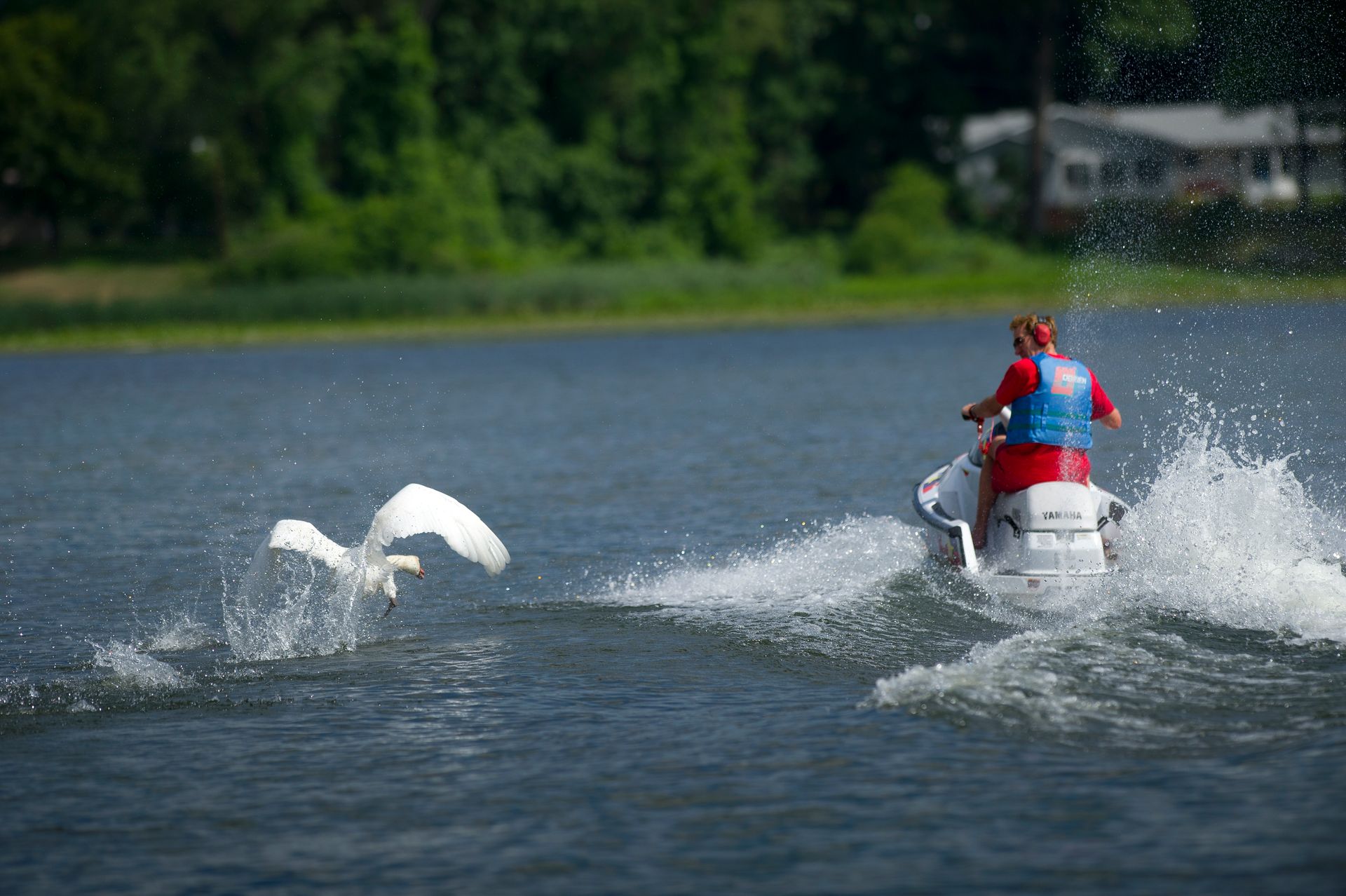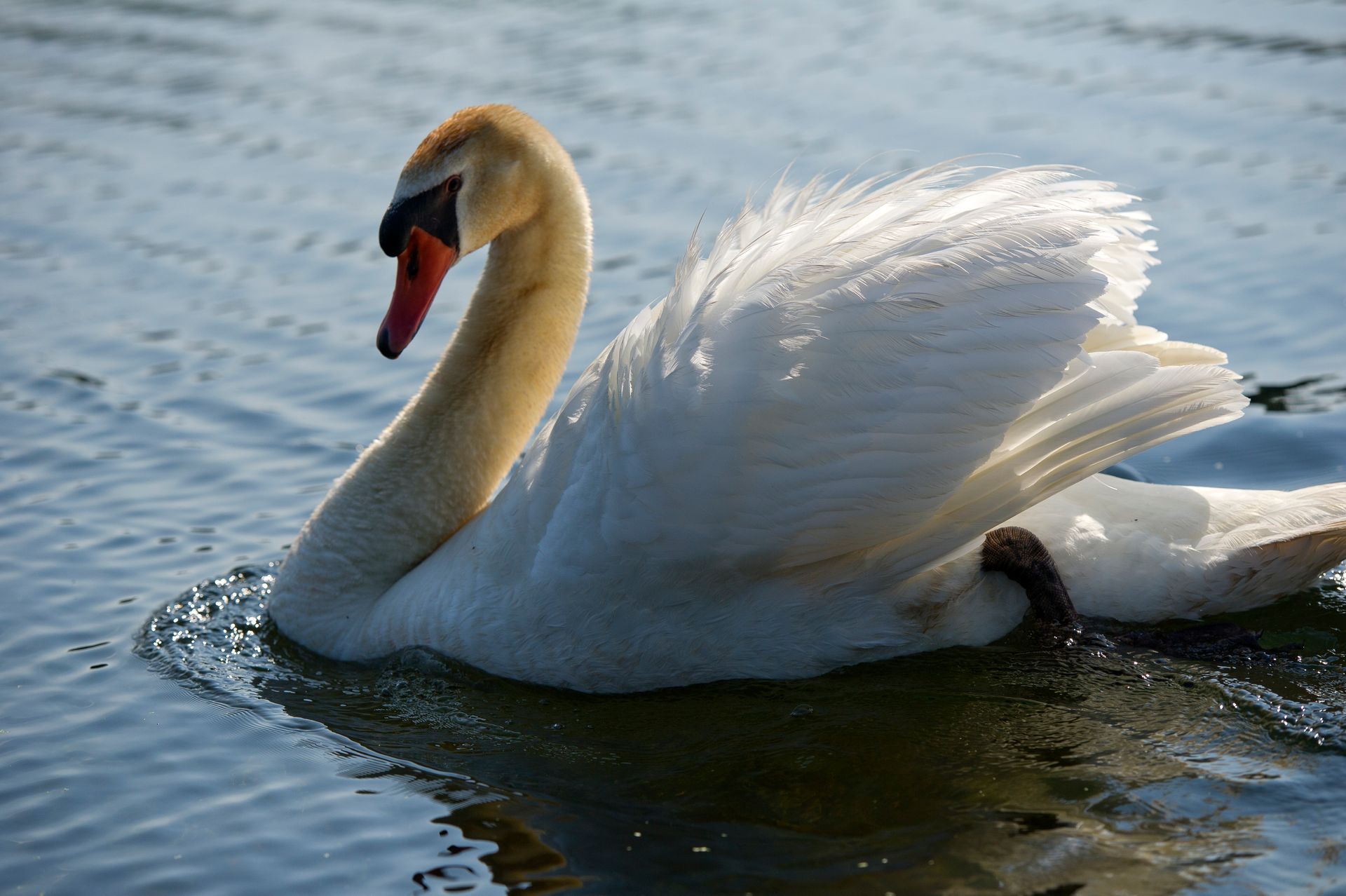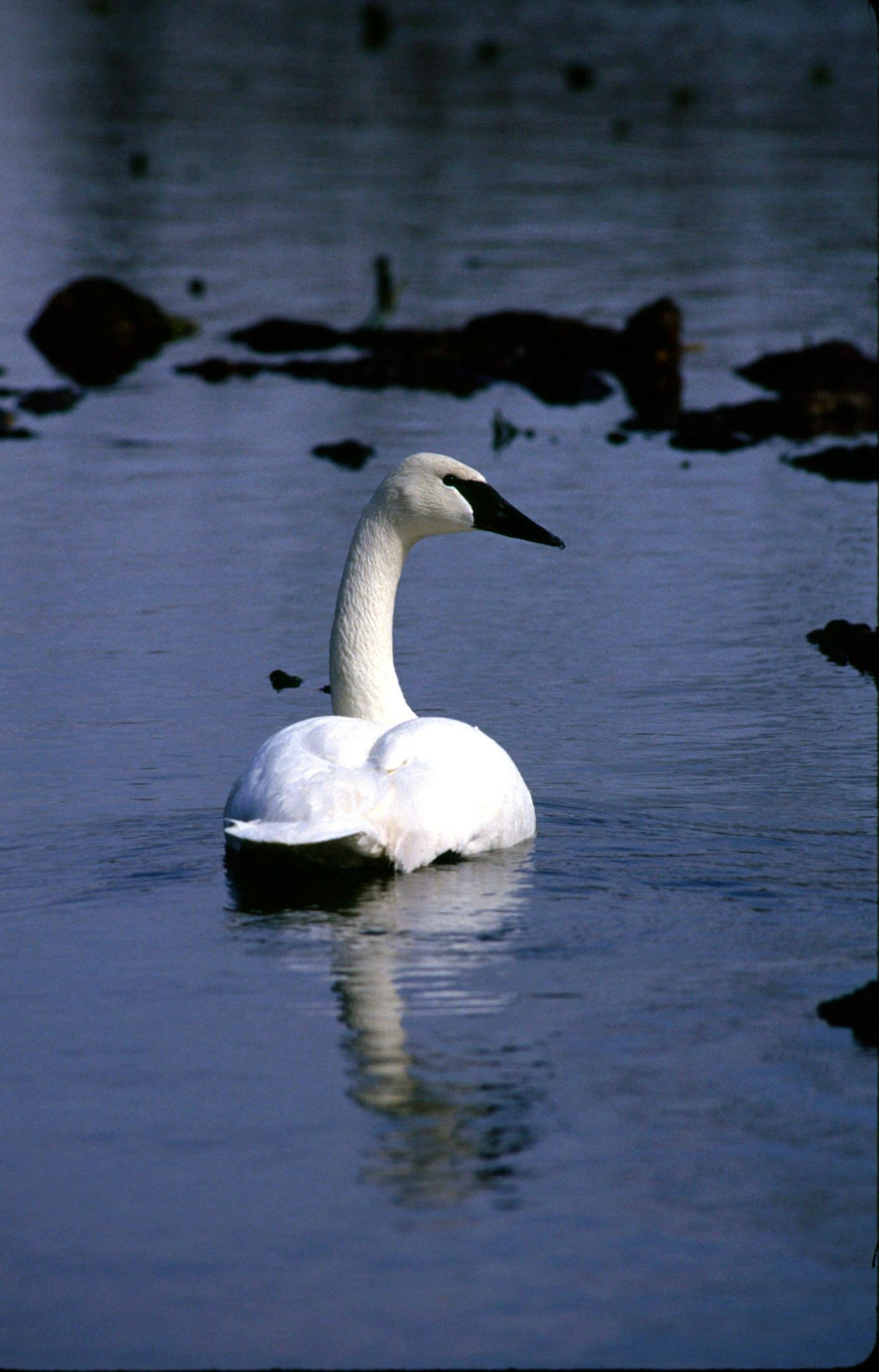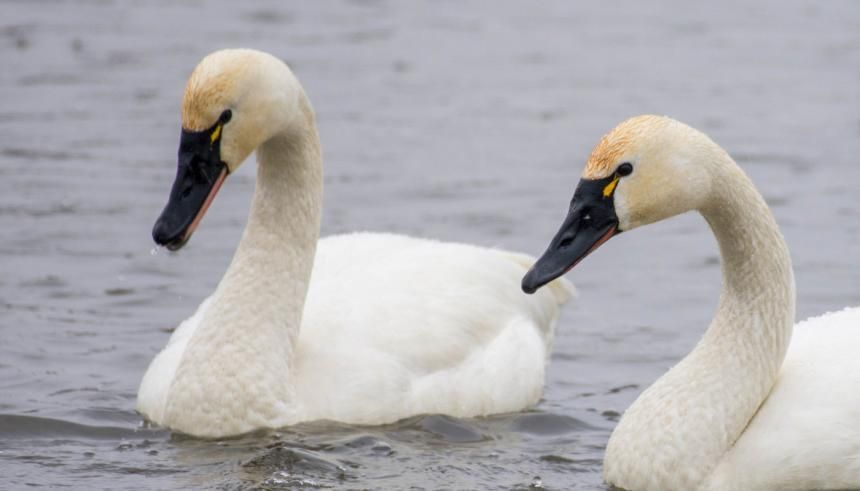The Not So Silent Invasive Mute Swan
The swan has long been a symbol of love and elegance, however, there is more to the story, at least for Michigan. In the state of Michigan, we see three types of swans: the mute swan, the trumpeter swan, and the tundra swan. While this may seem like triple the luck to have three of these beautiful birds, it can be quite unfortunate, as only two of them are native to the state. Unfortunately, the mute swan causes significant issues due to their characteristic aggression, displacing the native species, particularly during the nesting season.
Characteristics
The mute swan (Cygnus olor) is likely the species that most people are familiar with due to their abundance. While all Michigan swans are white, their beaks can be the easiest way to identify the species. Adult mute swans have orange bills with a black base and knob at the top. Additionally, the Michigan DNR recognizes the “S” curve of the neck as a form of identification in contrast to the trumpeter’s “C” curve. Both the trumpeter and tundra swan are smaller in size with black beaks; however, the tundra swan has a yellow patch between the beak and eye, as recognized by All About Birds.
Current Status
Looking at the three species of swan present in Michigan, the mute swan is the only swan in the state that is considered an invasive species. An invasive species is not native to the area in which it is established and causes harm to the environment or economy. A 2010 DNR survey suggested over 15,000 mute swans are present in the state, with increasing populations estimated at 9-10% annually. In addition to the booming population aiding species persistence, All About Birds reports a mute swan banded in 1962 that was at least 26 years old. This long lifespan, along with a lack of predators, contributes to the population’s ability to flourish in a habitat the species is not native to.
History
The invasive mute swan originated in Eurasia and was brought to North America in the 1800s for their beauty. By 1919, this species was introduced to Charlevoix County of Michigan, where captive birds were able to escape and become feral. During the 1960s, the population of the invasive bird was expanding, and the DNR began efforts to control this waterfowl.
Conservation
While they are beautiful to look at, Michiganders who have had a close interaction with the species, on shore or water, can understand the nuisance this species brings. Especially while nesting and raising young, the species can be aggressive toward humans and even drive out native birds from the area, causing problems for many species. Some of the native species harmed by the presence of mute swans are our native and threatened trumpeter swans and common loons. Moreover, waterfowl hunters may have recognized the issue that the aggression of mute swans has on native game species like blue-winged teal. These birds are often driven out of their nesting grounds by the mute swans, limiting the number of available sites suitable for rearing young, therefore impacting the success of the population. In addition to their characteristic aggression, the species is reported by the DNR to consume up to eight pounds of vegetation per day. This unsustainable consumption rate causes regeneration issues within inhabited wetlands, harming ecosystem balances from the root up.

To help control the population, there are removal permits for mute swans that can be acquired through the Michigan DNR, although hunting the species is not allowed. Instead, these permits can be used to remove the invasive swans or nests/eggs from private property. However, if there are other landowners on the body of water, there must be a minimum of 70% agreement among landowners before the permit can be issued. Once a permit is issued, residents can choose to hire a nuisance animal control company or do their own control under the supervision of a DNR staff during the first year. The DNR reports the greatest control by killing adults of the species rather than focusing on the nests and eggs.
Learn More
If you wish to remove a mute swan from your property, you can apply for a permit following the instructions on the DNR website. The department has also assembled a slideshow summarizing the history and management plans for this species. General information about the mute swan and its distribution can be found for further reading at All About Birds.






